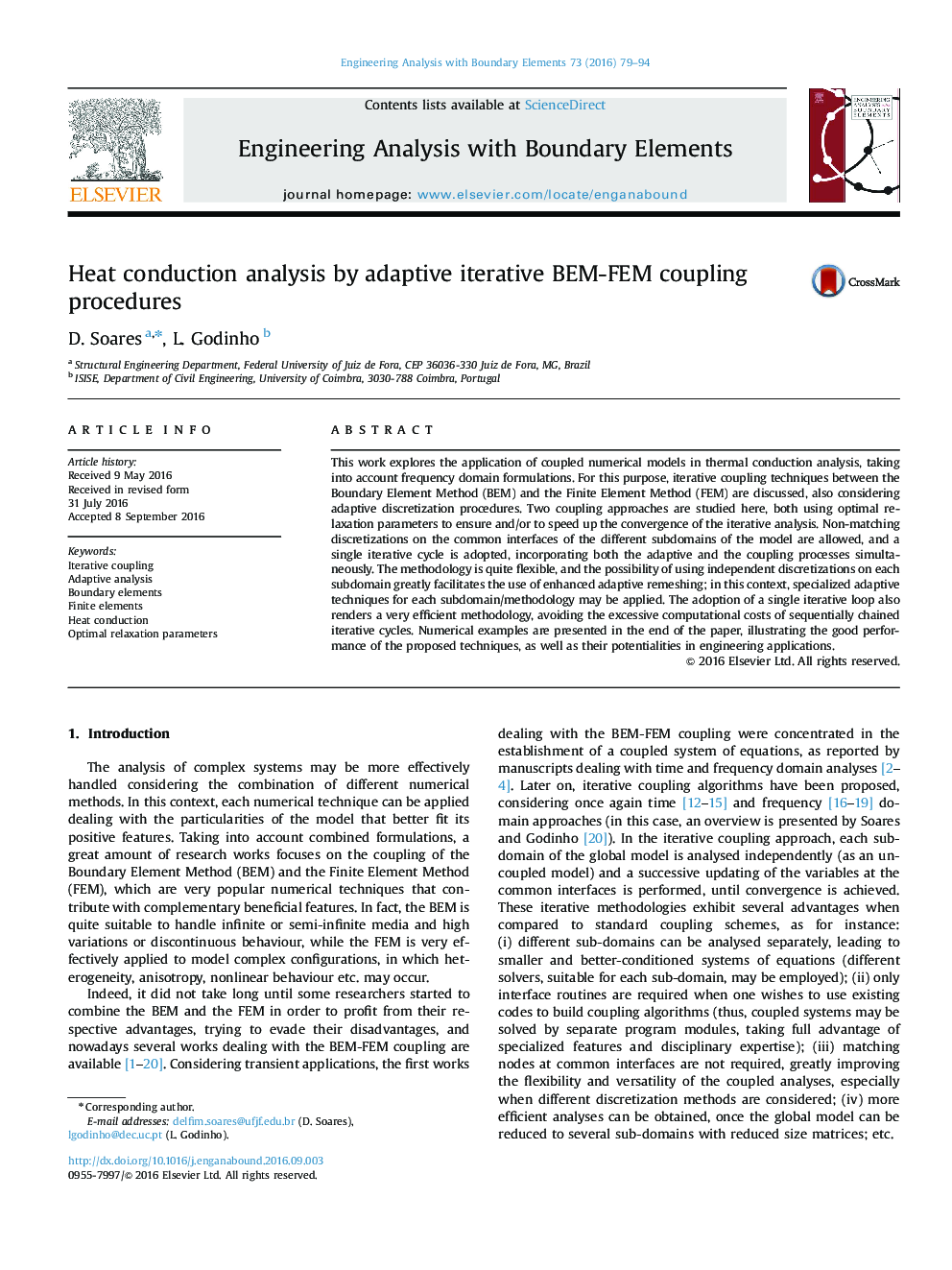| Article ID | Journal | Published Year | Pages | File Type |
|---|---|---|---|---|
| 4966109 | Engineering Analysis with Boundary Elements | 2016 | 16 Pages |
Abstract
This work explores the application of coupled numerical models in thermal conduction analysis, taking into account frequency domain formulations. For this purpose, iterative coupling techniques between the Boundary Element Method (BEM) and the Finite Element Method (FEM) are discussed, also considering adaptive discretization procedures. Two coupling approaches are studied here, both using optimal relaxation parameters to ensure and/or to speed up the convergence of the iterative analysis. Non-matching discretizations on the common interfaces of the different subdomains of the model are allowed, and a single iterative cycle is adopted, incorporating both the adaptive and the coupling processes simultaneously. The methodology is quite flexible, and the possibility of using independent discretizations on each subdomain greatly facilitates the use of enhanced adaptive remeshing; in this context, specialized adaptive techniques for each subdomain/methodology may be applied. The adoption of a single iterative loop also renders a very efficient methodology, avoiding the excessive computational costs of sequentially chained iterative cycles. Numerical examples are presented in the end of the paper, illustrating the good performance of the proposed techniques, as well as their potentialities in engineering applications.
Related Topics
Physical Sciences and Engineering
Computer Science
Computer Science Applications
Authors
D. Soares, L. Godinho,
